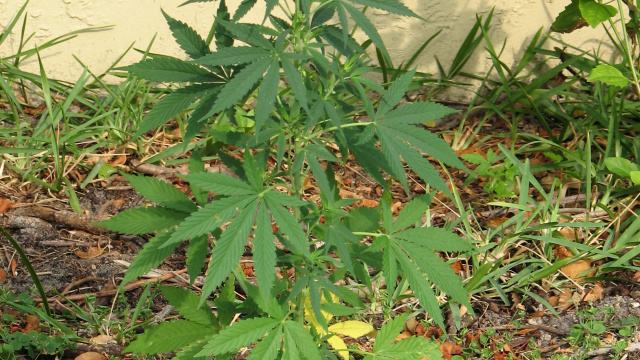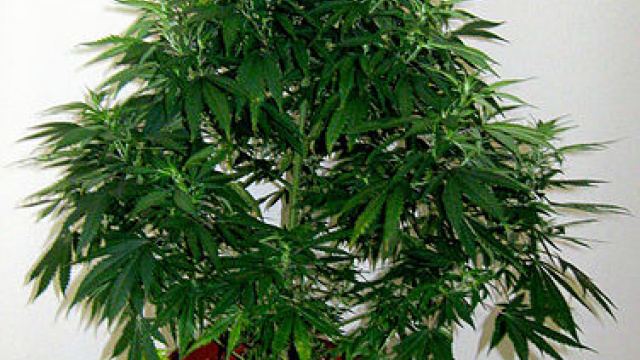 Montana ranks ninth among the top 17 states for marijuana use among teens, which is predictable, according to local law enforcement officials who blame the state’s “goofy” and “convoluted” marijuana laws.
Montana ranks ninth among the top 17 states for marijuana use among teens, which is predictable, according to local law enforcement officials who blame the state’s “goofy” and “convoluted” marijuana laws.
“This comes as no surprise,” said Billings Deputy Police Chief Tim O’Connell. “We are definitely seeing an increase in the schools, and it’s definitely related to bad legislation. We can thank the passage of legalizing marijuana. The laws aren’t clear.”
O’Connell said school resource officers are keenly aware of the growing problem and are battling it through education and enforcement.
Kristin Lundgren, director of Impact, a United Way of Yellowstone County program that works to curb underage drinking, said there is no “crisis of increased youth drug and alcohol use.”
“We did see an increase in eighth-grade use as reported in 2010 surveys, and we also saw teens were saying that marijuana is less risky and not harmful to your health,” she said. “We also have lots of anecdotal reports from School Resource Officers and school principals of increased incidents with marijuana in the schools.”
Montana voters approved medical marijuana by initiative in 2004. The state, which in 2009 had fewer than 4,000 medical marijuana patients, now has 11,993 on the Montana Marijuana Program registry. Of those, 1,778 are in Yellowstone County. Growth and sale of the drug have become a burgeoning business in the state. The law allows qualified patients and their caregivers to grow and/or possess a restricted number of marijuana plants.
The latest revelation about increased marijuana usage among Montana teens comes with the release of a study published in the Archives of General Psychiatry. The study, which looked at a representative sample of 10,123 teens between ages 13 to 18, shows that by the time most teens reach late adolescence, most of them have consumed alcohol and abused illicit substances.
Researchers asked the teens in person about their drinking and drug habits. The results showed that 78 percent of U.S. teens had drank alcohol, and 47 percent said they had consumed 12 drinks or more in the past year. When it came to drug use, 81 percent of teens said they had the opportunity to use illicit substances, with 42.5 percent saying they actually tried them.
In a twist not usually associated with risk-behavior studies, researchers compared teens’ current usage with lifetime estimates of alcohol and illicit substance abuse. Fifteen percent of the teens met the criteria for lifetime alcohol abuse, and 16 percent could be categorized as drug abusers.
It’s the second time in about 16 months that the issue of marijuana use among teens has come to the forefront. Last December, the rate of eighth-graders saying they had used an illicit drug jumped to 16 percent, up from 14.5 percent, with daily marijuana use up in all grades surveyed, according to the 2010 Monitoring of the Future Survey.
According to that survey, the decline in cigarette use accompanied by the increases in marijuana use put marijuana ahead of cigarette smoking. In 2010, 21.4 percent of high school seniors had used marijuana in the past 30 days, while 19.2 percent smoked cigarettes.
Chris Simpson, a school resource officer at Skyview High, said at the time that marijuana use is a problem throughout the school district and the community. The mixed message about the legalization of marijuana for medical purposes is a large part of the problem, he said.
Youths seeking a high will sometimes steal marijuana from those possessing a medical marijuana card. Students have told school resource officers how much easier it is to obtain pot since the passing of the medical marijuana law.
The state Department of Public Health and Human Services has acknowledged that marijuana is making a strong comeback among high schoolers.
The 2010 Montana Prevention Needs Assessment suggests that marijuana use rises as the parental acceptability increases. Perceived peer acceptability of marijuana use also plays a role.
“Availability and access to drugs, alcohol and marijuana, is the number-one way kids get substances,” said Vicki Turner, director of the DPHHS Prevention Resource Center. “The more it is available, the more likely they are to use. If family and friends use and the substance is available, youth are more likely to use, regardless of the substance.”
Source: Billings Gazette, The (MT)
Copyright: 2012 The Billings Gazette
Contact: http://billingsgazette.com/app/contact/?contact=letter
Website: http://www.billingsgazette.com/
Author: Cindy Uken



Leave a Reply